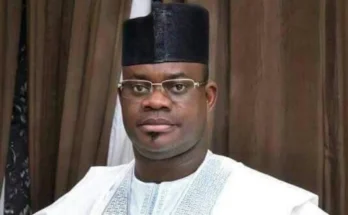With a dwindling animal popular on, decayed facilites and lack of funding, Abuja Natonal Children’s Park and Zoo is not attracting local visitors, let alone tourists as ABDURAHMAN ZAKARIYAU found out.
Early this year, , United States of American zoologist, William Conway said that ‘globally more than 700 million people visited zoos and aquaria last year’. In some countries, parks and zoos are huge sources of revenue, while in others, they are set up for first educational and relaxation purposes, as well as animal and plant conservation. Globally, parks and zoos attract tourists from across the world. In line with this global practice, the Abuja National Children’s Park and Zoo was commissioned on the 30th of September, 2001 by former President Olusegun Obasanjo specifi cally for the benefit of children. However, over 16 years after its establishment, the park is in a deplorable state. Apart from this, many questions still run through people’s minds, especially whether the park is of any benefit to the Children of the Nation.
Is the park and zoo being put to maximum use? What level of development has taken place in the park and zoo since its establishment? Whose responsibility is to maintain the facility? These are questions that are on the minds of most tourists that visit the Abuja Children’s Park and zoo. Signifi cantly, the Park is strategically located around the famous Aso Rock, a few kilometers from the Murtala Mohammed Expressway, behind the Presidential Villa, Abuja. Not far from the park is Niger and Wusasa Barracks which share compound with the State House Clinic. No doubt, the Park is located in a highly secure environment, given the insecurity in the country. In addition, it covers about 18.5 hectares of land and still retains its natural allure and sereen atmosphere which ordinarily are supposed to attract tourists any day, any time.
The facilities in the Abuja Children’s Park and Zoo include a Botanical Garden, Lake Café, walk ways, children and adult swings, sitting slabs, snack and drinks mini shops, walk way light, children’s play ground, toilets, animal cages, a borehole and a parking lot among others. All these facilities are expected to make the park and zoo an outstanding place, but the reverse is the case.
 Right now, the zoo has just few animals left in the animal enclaves. As at the time of our correspondent’s visit, animals like horses, donkeys, ostriches, Zebra, snakes, crocodiles, tortoise, monkeys and baboons were at the zoo. Most of these animals were donated by and their enclaves were also constructed by individuals. But due to inadequate funding, the animal population has not increased, according to Blueprint Weekend’s findings. Rather they have reduced in number as our correspondent has gathered. The situation is so bad that the animals are highly affected, most of the animals in the Zoo have died, some are dying and few are in dire need of medical attention. The sorry state of the facility is not limited to the animals. At the point of entrance of the Zoo and Park, an off ensive smell oozing out from the male and female
Right now, the zoo has just few animals left in the animal enclaves. As at the time of our correspondent’s visit, animals like horses, donkeys, ostriches, Zebra, snakes, crocodiles, tortoise, monkeys and baboons were at the zoo. Most of these animals were donated by and their enclaves were also constructed by individuals. But due to inadequate funding, the animal population has not increased, according to Blueprint Weekend’s findings. Rather they have reduced in number as our correspondent has gathered. The situation is so bad that the animals are highly affected, most of the animals in the Zoo have died, some are dying and few are in dire need of medical attention. The sorry state of the facility is not limited to the animals. At the point of entrance of the Zoo and Park, an off ensive smell oozing out from the male and female
dilapidated toilets greets the visitor. Afterwards, he is welcomed by flies from unkempt concrete dustbins that have not been evacuated. Fallen sitting slabs, collapsed walk way light, bushy and unkempt surroundings paint the picture of the park. The children’s recreation facilities are in adequate, the physical buildings, the lake café and the dilapidated cages of most animals say much about the state of abandonment that they have suffered. According to John Kolade “the paint has been washed off by rain, some of the animal cages are weak and some damaged. Therefore it is even more dangerous for the children”.
Beauty they said is in the eyes of the beholder. Thus, another visitor who came all the way from Rivers State with his family, Ayodele Akinberu has a contrary view. He stated that the Abuja Zoo and park is far better than that of Port Harcourt, as the off ensive smell from the Zoo is not as bad as that of the Garden City. Notwithstanding his praise, Akinberu said that there is need for improvement, especially the facilities in the Zoo and the number of wild animal for educational purposes.
He also challenged the management to make available means of transportation for visitors within the park and zoo. The Deputy Director Abuja National Children’s Park and Zoo, Alhaji Aminu Muhammed also lamented that the poor condition of the park was as a result of government’s inadequate funding and poor management. He said State House is responsible for the day to day running for the Abuja National Children’s Park and Zoo.
“State House is responsible for setting up committee to oversee the activities. We have had two committees; the fi rst one lasted from 2001 to 2013. The other committee was set up from March 2013 till date. But the problem is, are the committees doing what they are supposed to do in terms of fund raising?” The Deputy Director noted that the park has been self sustaining , as no amount of money has been channelled to it in recent times. Muhammed also said “we are supposed to have popular animals that will attract people. When I say popular animals, I mean an animal like giraff e, Elephant, Lion, Tiger and leopard. Some of these animals are called special species, as they will attract and boost our visitor’s attendance and make the visit more interesting”. He added that the facility needs total renovation and upgrading, as some of the facility’s land are currently lying fallow. “Over years of developing this place, we don’t have many animals and don’t have other facilities. Ordinarily, we are supposed to have education result center”.
According to him, the staff strength of the zoo and park is 23 workers and their salaries are derived from the monies generated from the park as no single kobo or allocation comes from the government. He however, challenged the government to constitute a formidable committee of passionate individuals that will influence positive changes in the place. Another visitor, Ms Aisha Ibrahim urged the government to come up with a reliable sustainable system, total renovation and to give room to private individuals to manage or invest in the facility, so that the Abuja National Children’s Park and Zoo can become one of the best in Africa.



